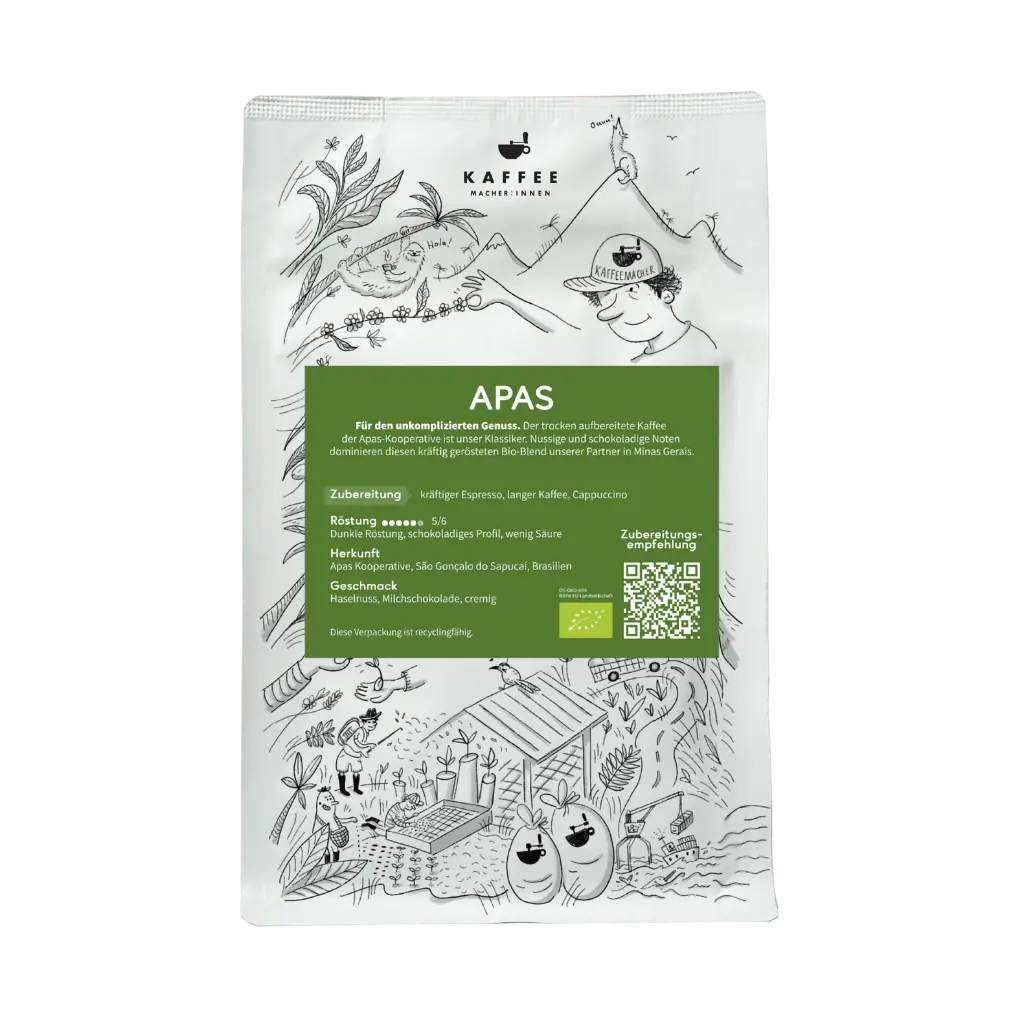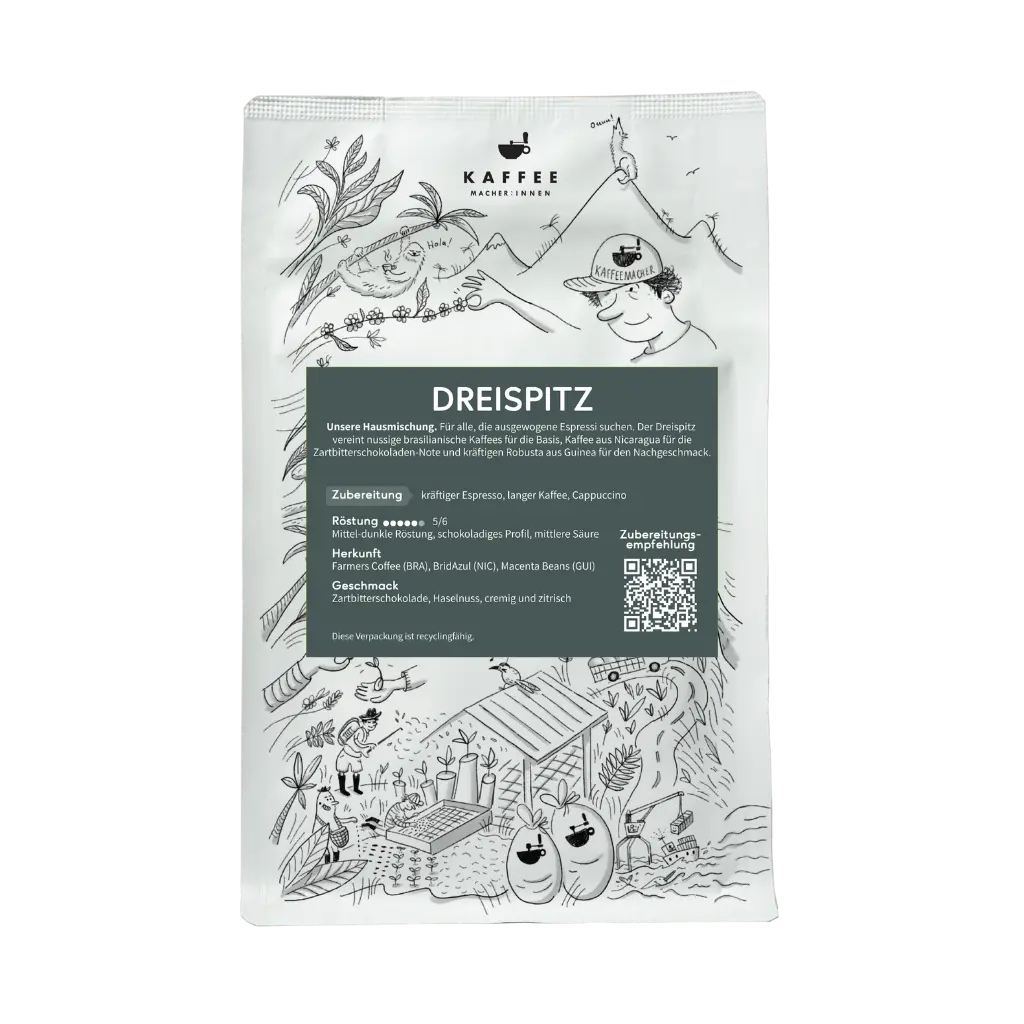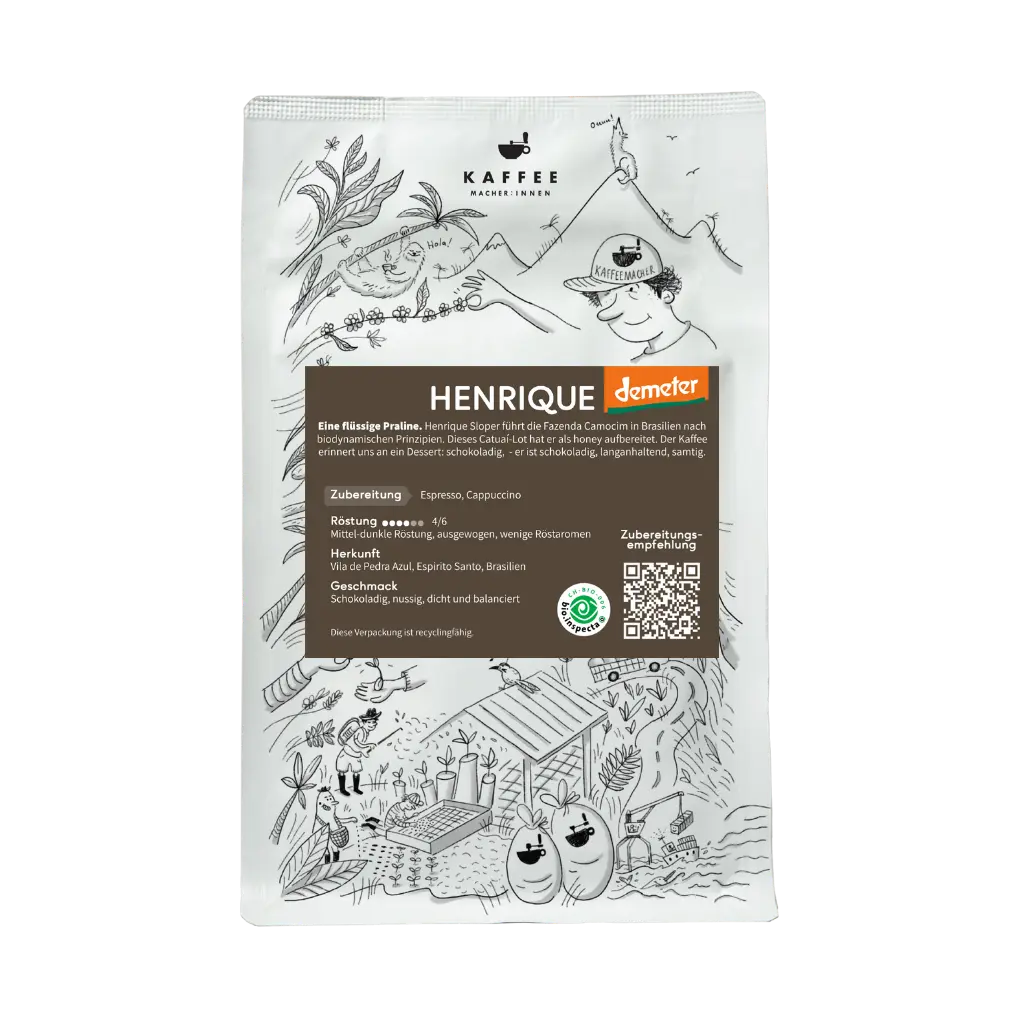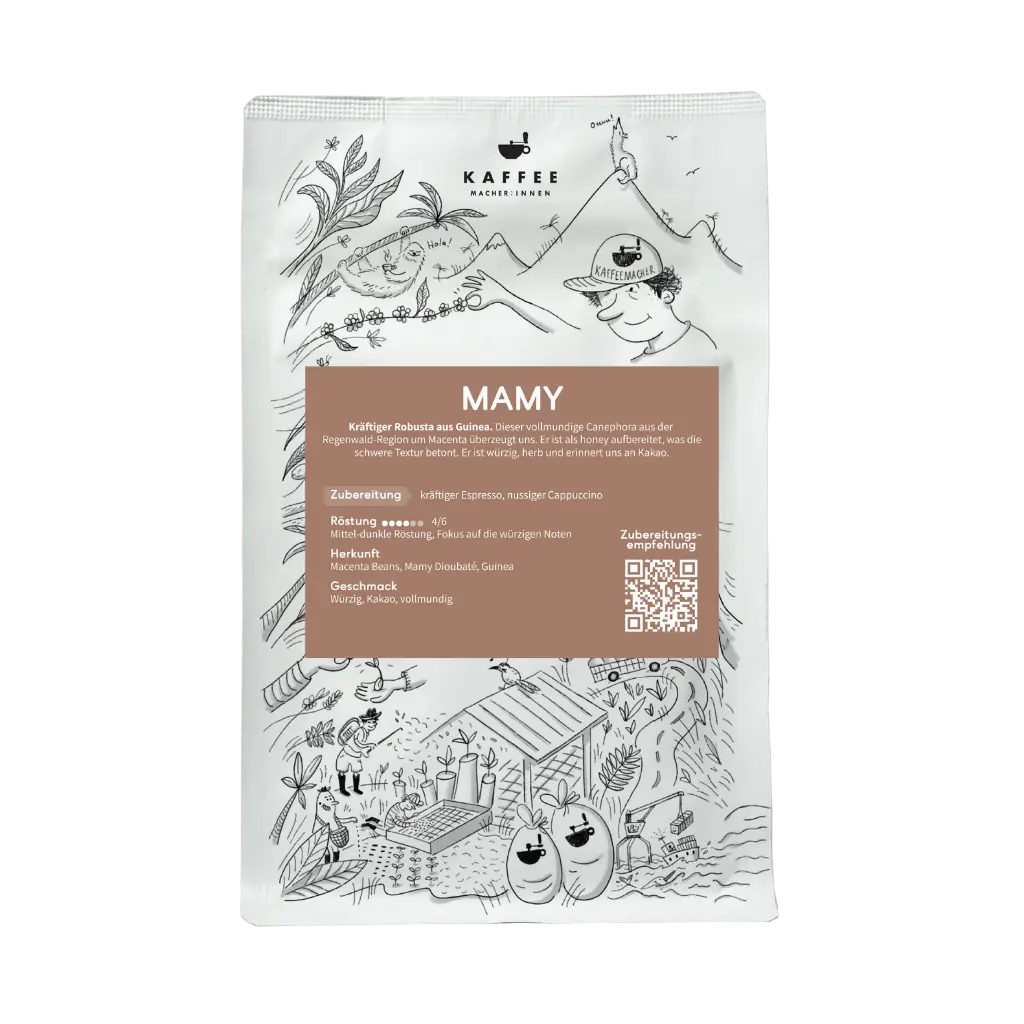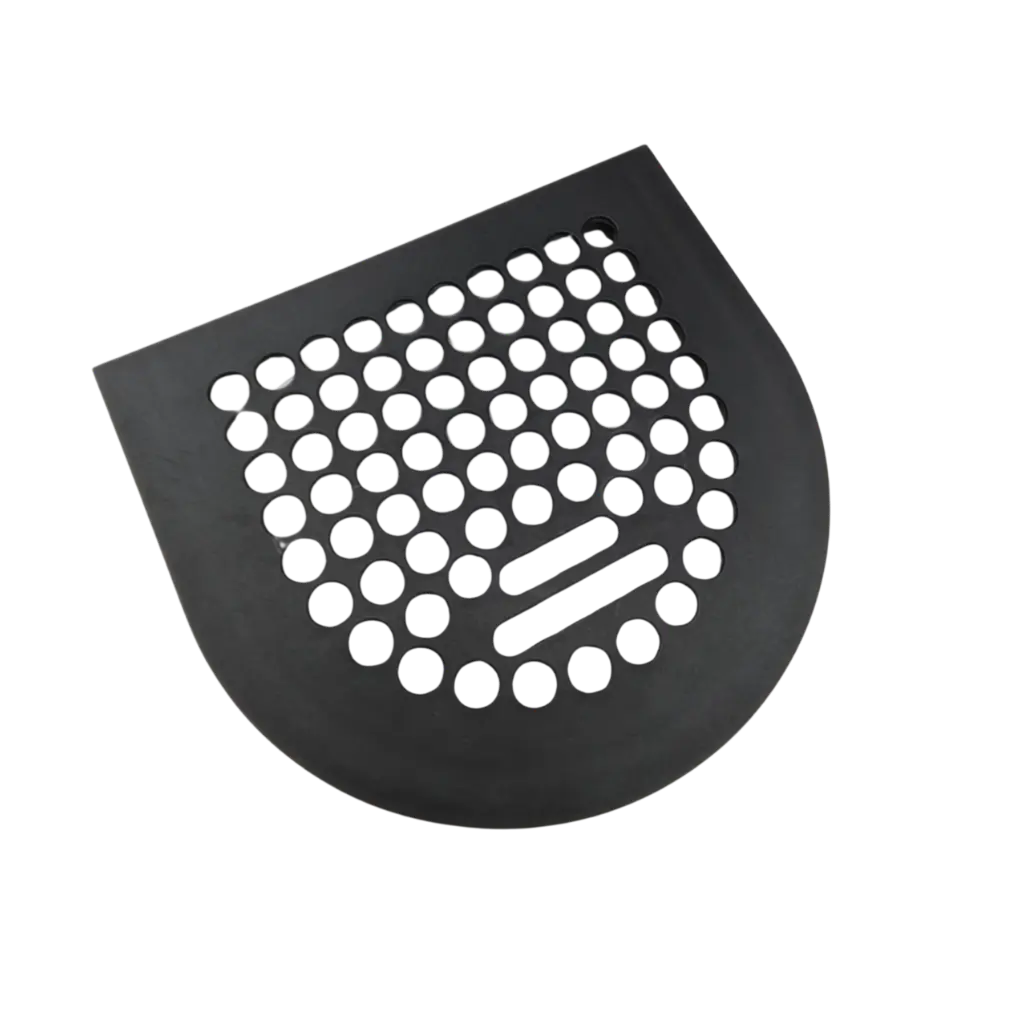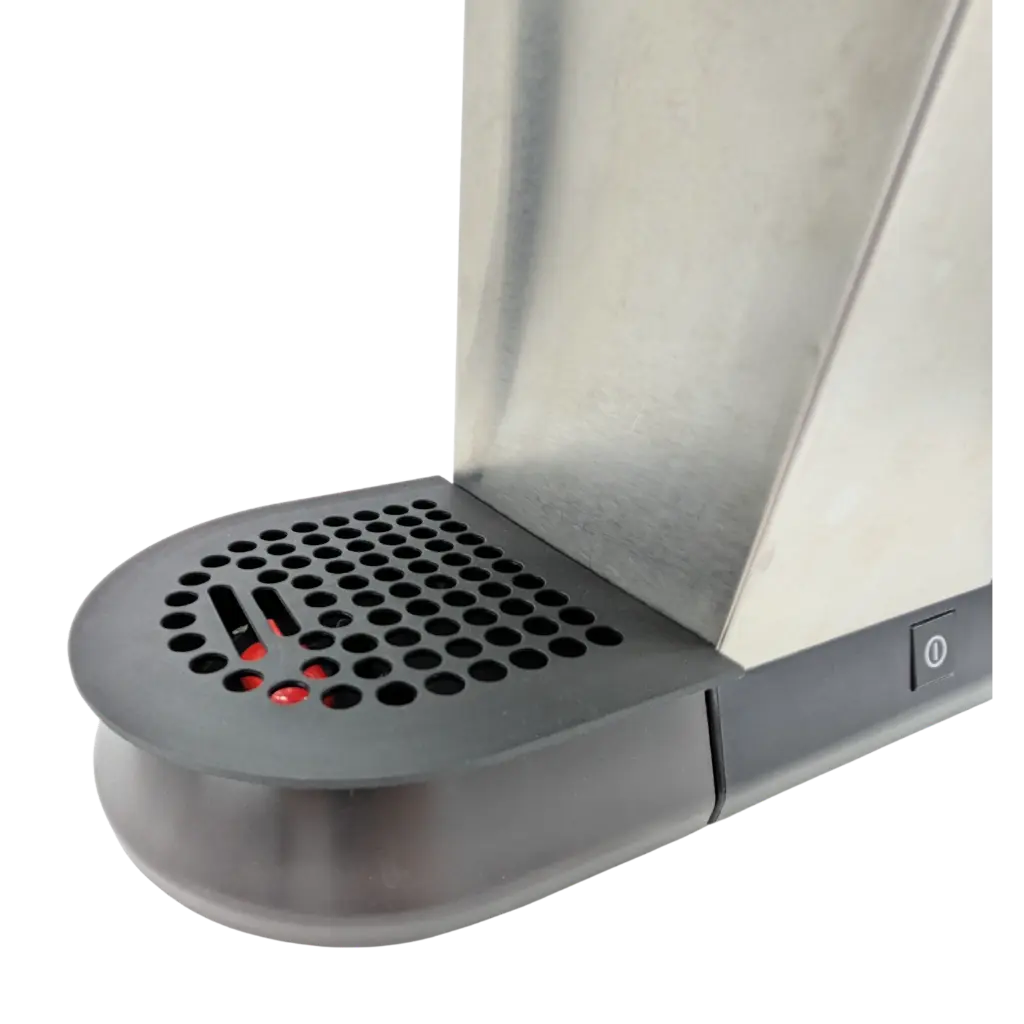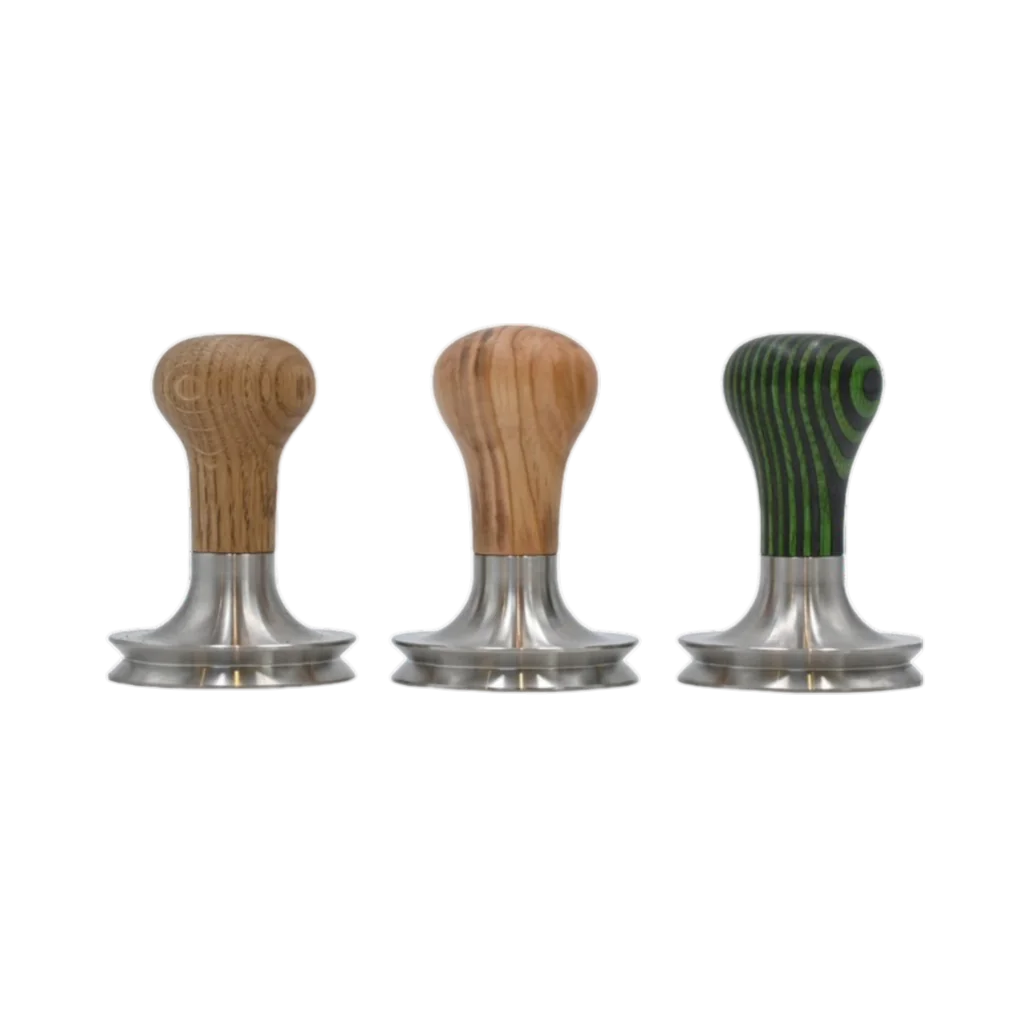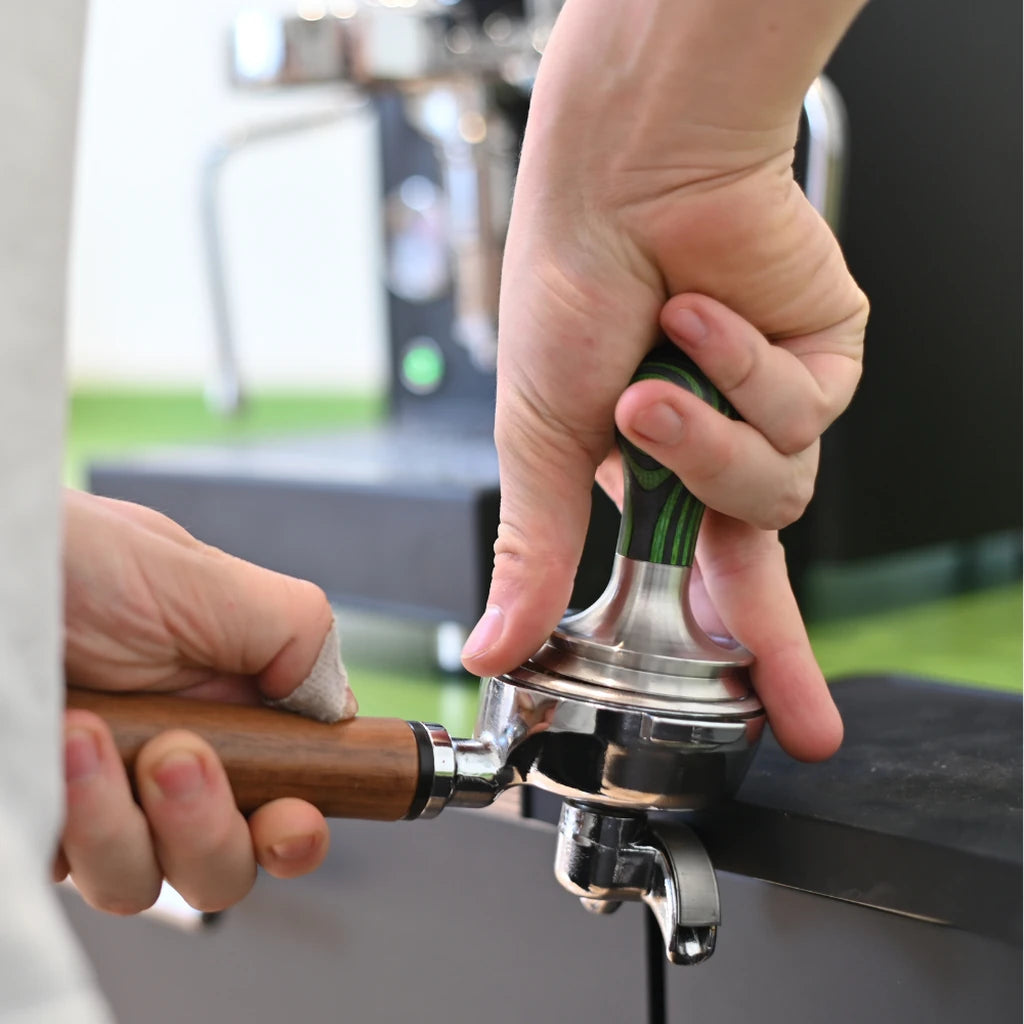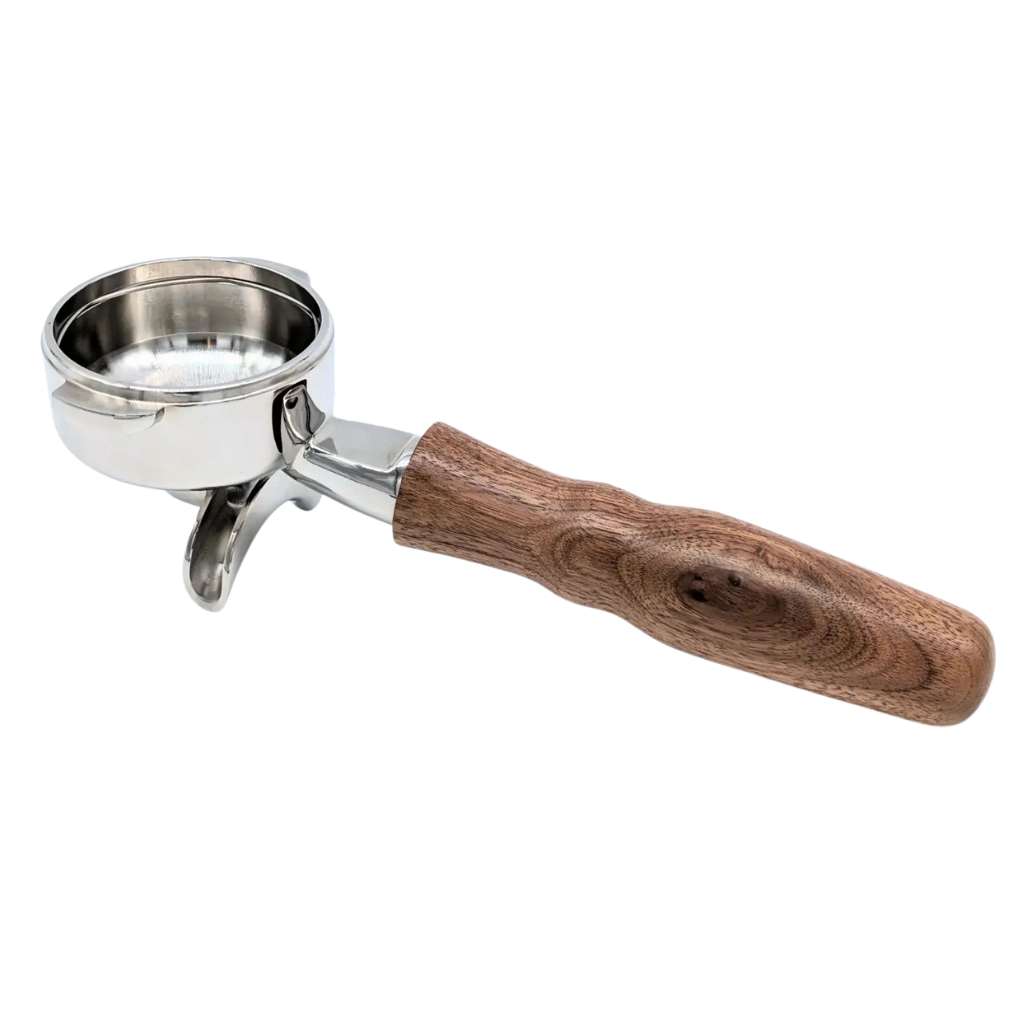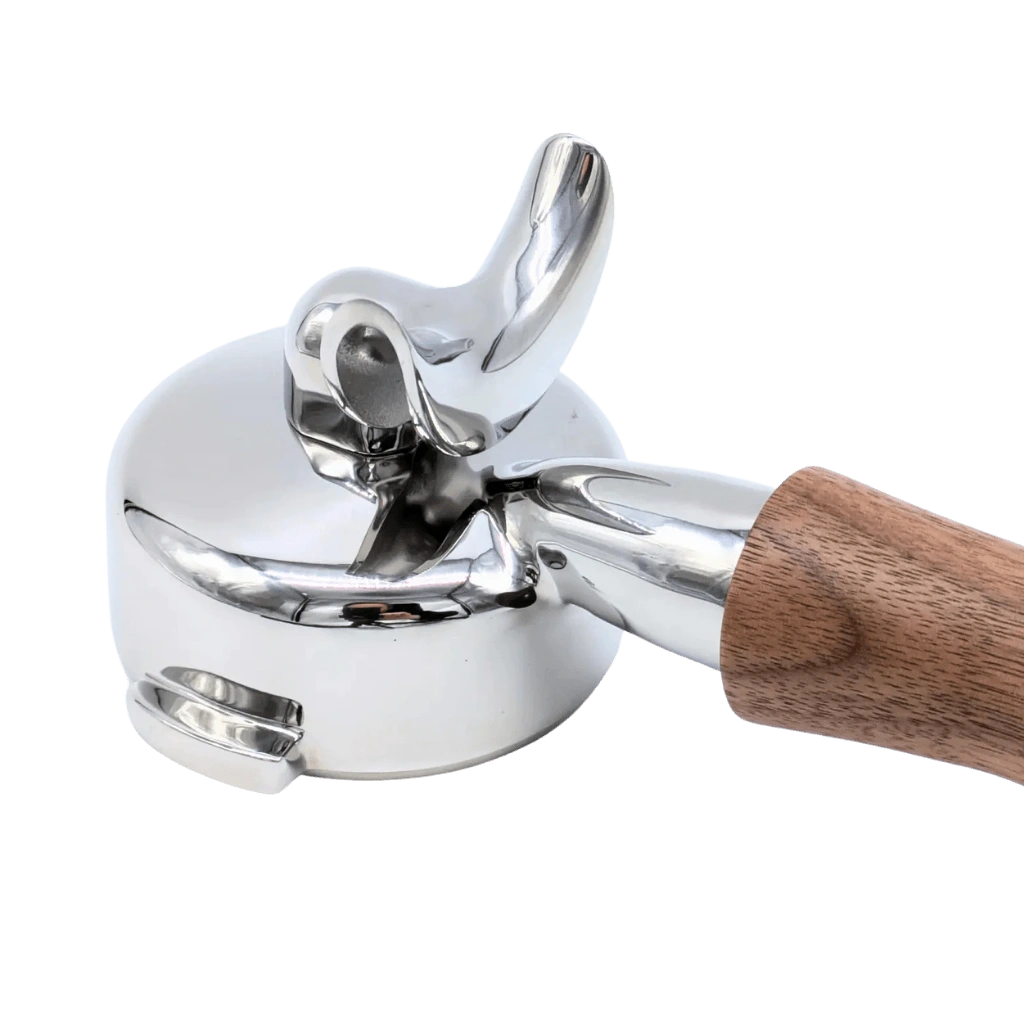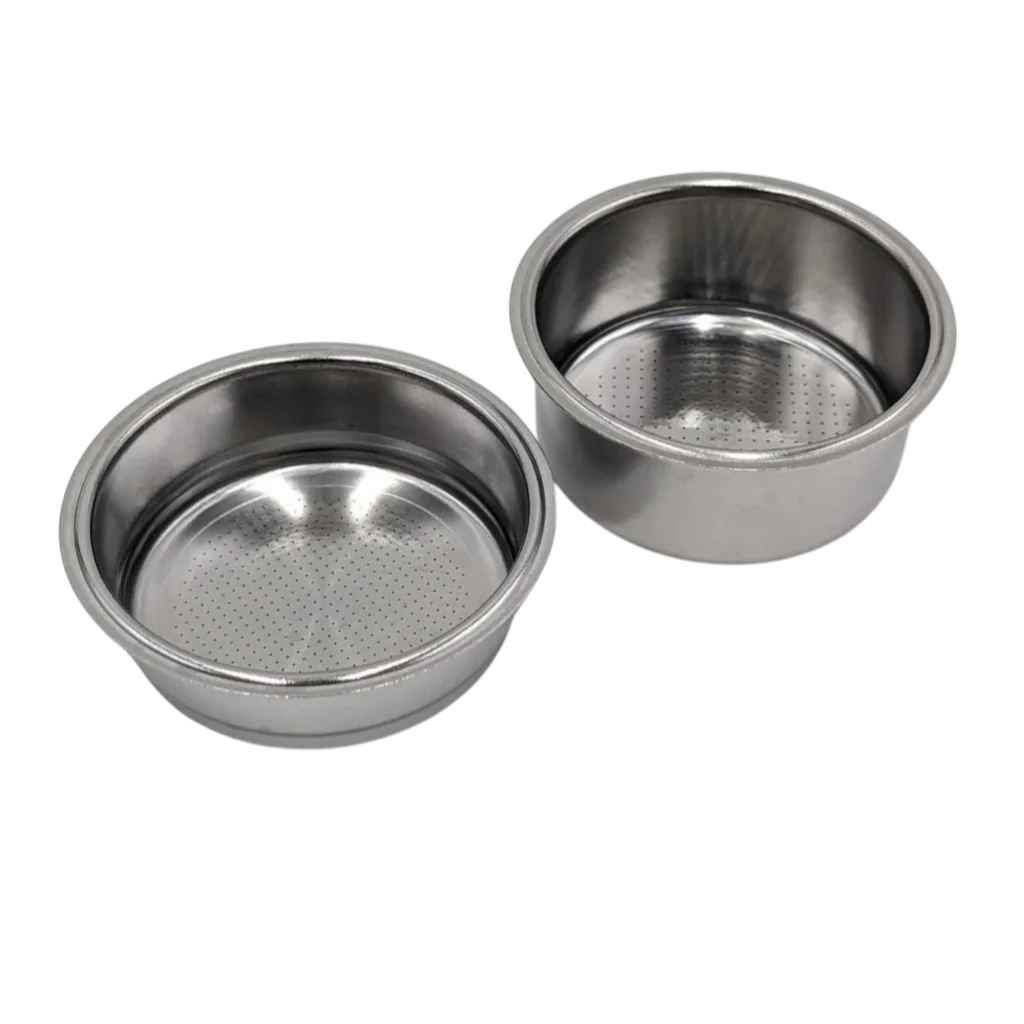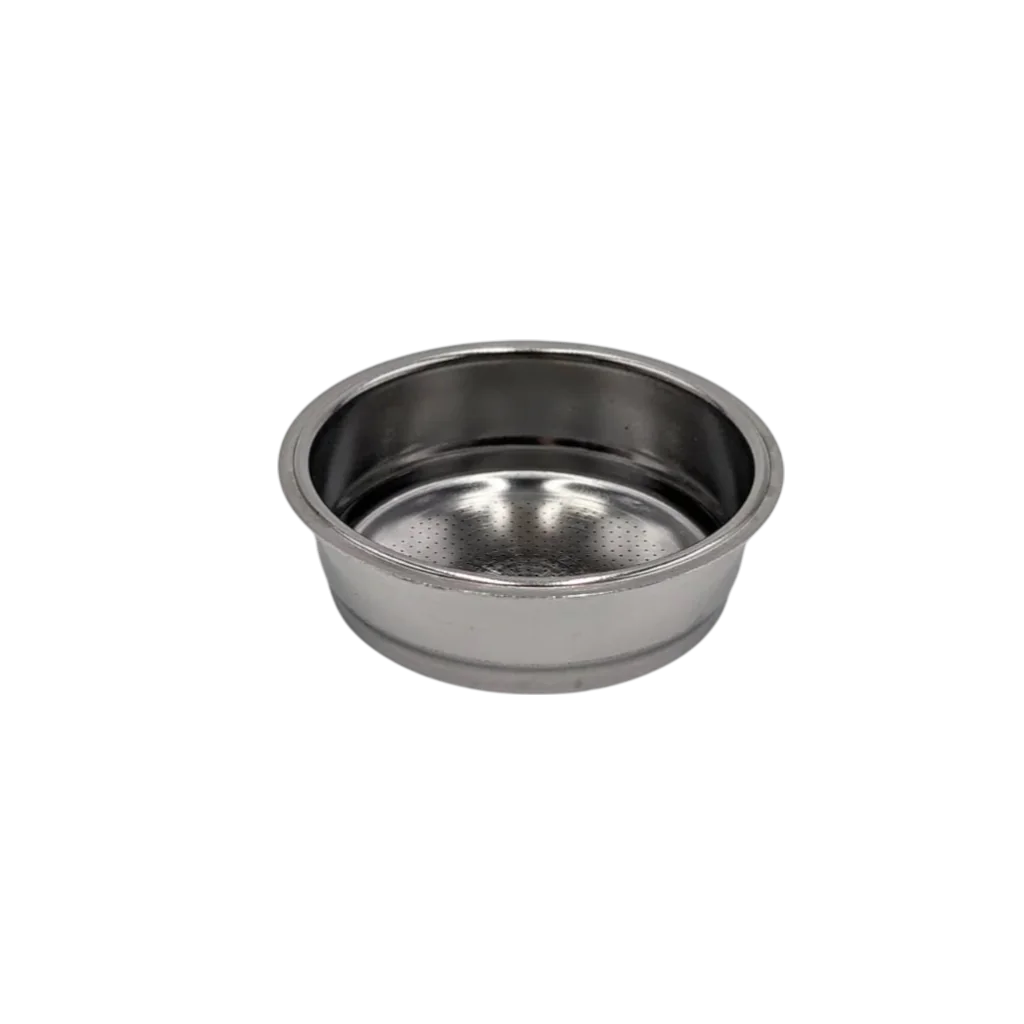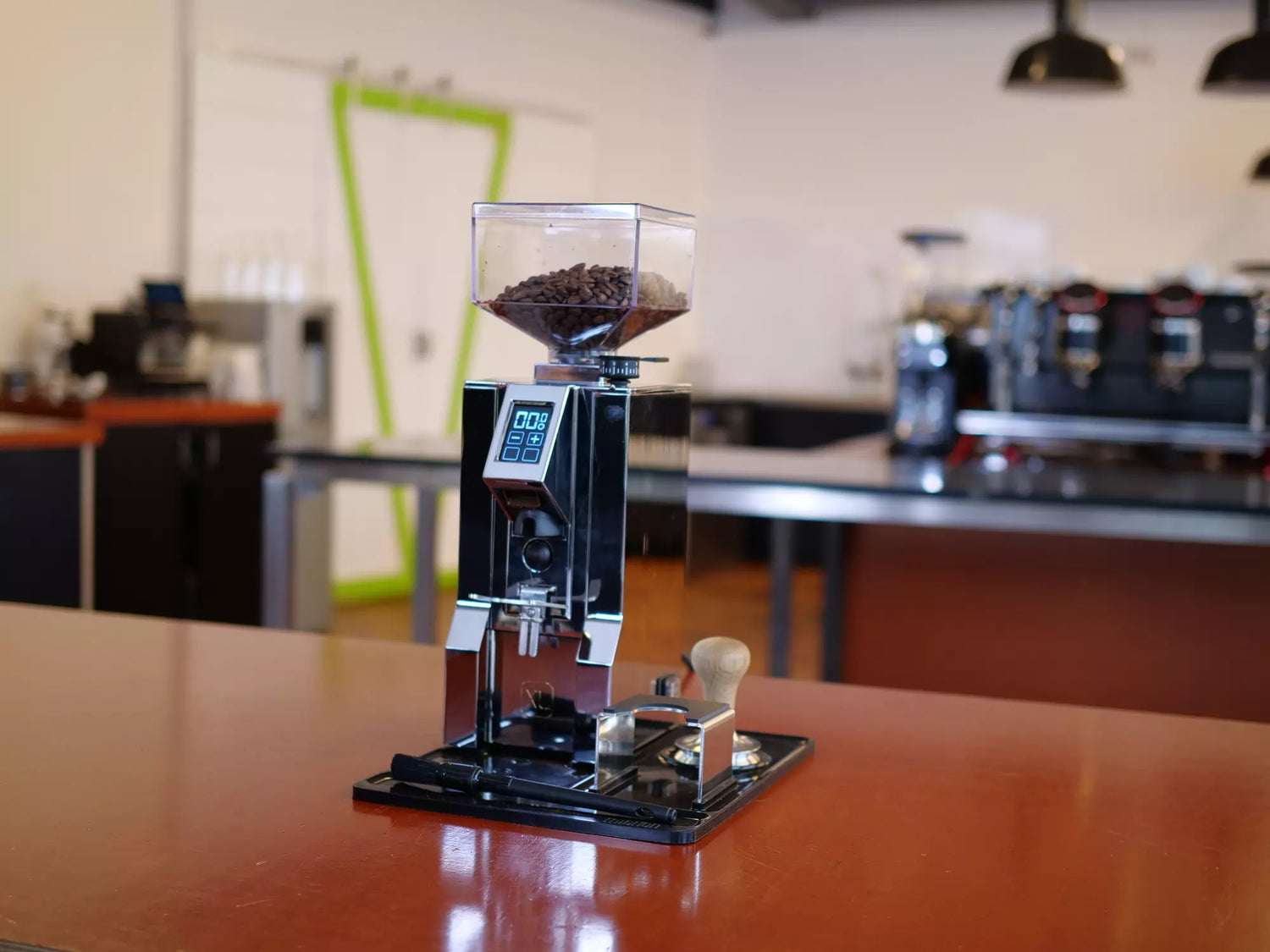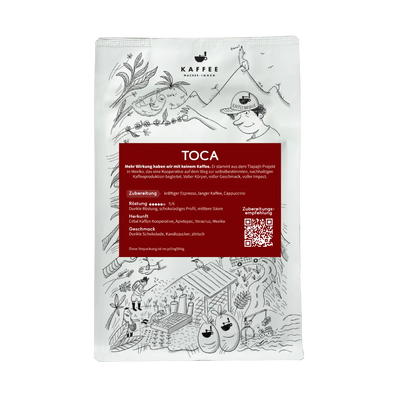The Eureka Mignon XL performed well in our espresso grinder test. We compared a total of 24 espresso grinders , ranging in price from €100 to €2,000. The grinder test was conducted over several months by Swiss master barista Michel Aeschbacher and his barista team in collaboration with the Zurich University of Applied Sciences . Thank you for your support!
Eureka Mignon XL Oro - Compact quality
The Eureka Mignon XL is positioned in the upper segment of home espresso grinders. Eureka thus closes a gap in its own product range between the more affordable Mignons and the entry-level professional class. Priced at approximately €680 and around CHF800, the Mignon XL belongs to Eureka's premium category ( Oro label) while still remaining firmly in the segment of home espresso grinders.
The Mignon XL weighs 7.2 kg and measures 12 cm wide, 18 cm deep, and 38 cm high. Compared to the Mignon Magnifico and Specialita, it is identical in width and depth, but 3 cm taller.
If you're looking for a quieter espresso grinder, the Eureka Mignon XL is a good choice. With a noise level of 77.2 decibels, the grinder demonstrates relatively quiet performance compared to 23 other popular home espresso grinders. We consider values below 80 dB to be good.

The Eureka XL is available in chrome, matte black, white, gray, and Ferrari red. We were allowed to use the chrome version in our test. It's attractive, but very prone to fingerprints . A polishing cloth should be kept nearby if in doubt.
The continuously variable disc grinder has a diameter of 65 mm and is treated with Eureka's patented Diamond Inside technology. Eureka claims the grinder can withstand grinding up to 1,500 kg of coffee. We haven't tested this, but based on the particle distribution below, we can give an assessment of the quality of the grinders.
Recommended dealers for the Eureka Mignon: Lücke Technik *
Good espresso is no coincidence!
We consistently enjoyed good espressos brewed with the Eureka Mignon XL, both in our comparative tastings and in our individual tests. A few good and very good espressos are occasionally outliers. However, the Mignon XL offers some evidence of good consistency.
With a dead space of 3.1 g, this espresso grinder is one of the better grinders. We consider up to 3.5 g of dead space to be acceptable. Dead space is the ground coffee remaining around the grinding chamber that is not dispensed when grinding is complete. The ground coffee in the dead space is then dispensed first during the next grinding. Depending on how long it has been since the last grinding, some of the ground coffee may not be fresh.

Over ten grinds with a set dispensing quantity of 18g of coffee, the Eureka Mignon XL exhibited a standard deviation of 0.27g. This is also a good value.
| 17.50 | 17.50 |
18.00 |
18.00 |
18.30 |
18.00 |
18.10 |
17.80 |
17.70 |
18.10 |
Especially with cheaper espresso grinders, the ground coffee often heats up considerably, which can negatively affect the flavor. With an average temperature of 34.4 degrees Celsius and a slight incline over six grindings at 30-second intervals, the Mignon XL also delivered good results.
Only in terms of speed does the XL place itself in the middle of the pack. The Mignon XL grinds 28.7 grams of coffee in ten seconds. That's quite a lot; it could be worse, but it could also be better.
The espresso tasted velvety, strong, and complex— reminiscent of marzipan, bringing out the best in our Apas espresso. If you'd like to try the Apas, you can order it here in Germany/EU and here in Switzerland .

Particle distribution of the Eureka Mignon XL
Let's take a look at the particle distribution of the Mignon XL. We measured a total of seven different curves. For each, we took a sample of the ground material and examined it in the laboratory at the ZHAW Wädenswil.
The Eureka Mignon XL was coded as grinder 15 (M15) . The tests were numbered, see also the key. T1 in red (see above) represents a test of the ground coffee upon delivery. The grinder was set to a very fine setting and has a correspondingly high fine content and a correspondingly deep main peak.
Tests 2, 3, 4, and 7 overlap well here. The same recipe was used for each of these grinds. For this purpose, we weighed 18g of coffee and adjusted the grinder so that the grind size was calibrated for an extraction of 45g of coffee in 25 seconds.

At T2 and T3, six espressos were dispensed every 30 seconds. We investigated whether the temperature of the ground coffee increased and, as a result, whether this had a significant impact on the particle distribution. We did not detect any such deviation . In fact, the average temperature of 34.4 degrees Celsius was not high either.

Next, we adjusted the espresso to the original brewing recipe (T4) and took a corresponding sample. This served as the starting sample for determining the fines content and main peak. The Eureka Mignon XL has a fines content of 21.63 percent. This puts it in line with the average (21.96%) for the mill field . We occasionally detected a slight dryness in the aftertaste of the espresso, which could be due to the fines content. However, this was not predominant.
The coarse peak had a width of 238. The average coarse peak was 249.6. This indicates that the Eureka Mignon XL has a slightly higher proportion of particles in the desired grind range and thus performs slightly better than average.
We then set a ristretto (T5) and then a café crème (T6). Curve 7 shows the particle distribution when attempting to "reset" to exactly the same grind size, based only on the markings on the grind adjustment dial. Unfortunately, this wasn't possible as precisely as desired. After resetting, the coarse peak was 249 wide and the fine fraction was 21.4. Accordingly, the espresso ran slightly faster and had to be readjusted.

The grind setting on the Mignon XL Oro is not precise enough to flexibly switch between different drinks and beans.
Suitability for single dosing
More and more home baristas prefer single-serve grinding. The desired amount of coffee is weighed, added to the grinder, and ground directly. This prevents coffee beans from aging in the bean hopper and allows for quick switching between different coffee beans. It also allows for easy switching between different brewing recipes, from espresso to café crème and back again.
For a grinder to be suitable for use as a single-dosing espresso grinder, it should have little dead space, grind the grinding chamber as completely as possible during longer grinding sessions, and be precisely adjustable.
While the Eureka Mignon XL's dead space is relatively small at 3.1 grams, at least 0.3 grams of coffee always remained in the grinder, even after a long grinding cycle. This could definitely be improved!
The precision of the grind setting won't always be sufficient to achieve the perfect grind when switching from recipe to recipe and from bean to bean. Therefore, the Eureka Mignon XL can certainly be used as a single-serve grinder, but it won't be able to compete with grinders designed for this purpose. With an upgrade like a bellows bean hopper, the performance of the remaining ground coffee can at least be improved.

And how easy is it to change the coffee beans when the bean container is full?
When the Mignon XL's slider is closed, the bean hopper can be removed. The bean hopper itself holds up to 300g of coffee. However, we recommend that you do not fill it up, and instead add coffee more frequently. The bean hopper is transparent and not hermetically sealed. This causes the coffee to react with light and oxygen, causing it to age more quickly. Rancid off-flavors develop surprisingly quickly.
There are 15.2 grams of coffee under the bean hopper below the locking slide. This must be removed before, for example, another type of coffee can be used. Compared to many other grinders, this is relatively low.
Conclusion: Good espresso grinder for home
The Eureka Mignon XL impressed us as a home espresso grinder. It delivers at least good, and in some cases even excellent, results in all areas.
The grinder's display is intuitive and practically simple to use. The grind setting could be more precise, but it's more accurate and easier to adjust than the smaller grind setting on the Eureka Mignon Specialita or Magnifico, for example.
The most important thing is that the espresso tasted good across the different extractions. With the Eureka Mignon XL Oro, you're definitely choosing a good grinder.
If the espresso you make with the Eureka Mignon XL doesn't taste good, perhaps our article on espresso preparation or one of our coffee courses will help.

![]()



